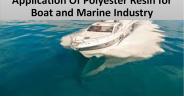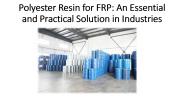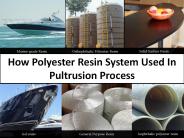Vinyl Ester Resin PowerPoint PPT Presentations
All Time
Recommended
Global Specialty Vinyl Ester Resin Market was valued at USD 1.07 Billion in 2022 https://www.cognitivemarketresearch.com/specialty-vinyl-ester-resin-market-report Companies: Swancor, Sino Polymer, Fuchem, Ashland, DSM, Showa Denko, Showa Denko Type: Flame Retardant Epoxy Vinyl Ester, Phenolic Epoxy Vinyl Ester, High Crosslinking Density Epoxy Vinyl Ester, Flexible Epoxy Vinyl Ester, PU Modified Epoxy Vinyl Ester, Others Application: FRP Products, Anti corrosion Coating, Others
| PowerPoint PPT presentation | free to download
Isophthalic resin manufacturers certain days are offering the first-class series of Isophthalic Resin. Resins appear to be amorphous, complicated natural products.
| PowerPoint PPT presentation | free to download
The majority of the styrene with both vinyl ester, while the rest connection amongst itself, appears in polyester particles in the resin. In addition, the vinyl ester is resistant to oxidative scorching.
| PowerPoint PPT presentation | free to download
Big Market Research adds a report “Vinyl Ester Resin Gelcoat Industry- Size, Share, Trends, Company Profiles, Demand, Insights, Analysis, Research, Report, Opportunities, Segmentation and Forecast 2021" Know More @ http://www.bigmarketresearch.com/global-vinyl-ester-resin-gelcoat-industry-2016-deep-research-report-market The report provides a basic overview of the industry including definitions, classifications, applications and industry chain structure. The Vinyl Ester Resin Gelcoat market analysis is provided for the international market including development history, competitive landscape analysis, and major regions’ development status. Enquire about report @ http://www.bigmarketresearch.com/report-enquiry/412070
| PowerPoint PPT presentation | free to download
Market Research Future Publish New Market Research Report On-“Vinyl Ester Market 2021 Global Analysis, Size, Share, Trends, Opportunities and Growth, Forecast 2027”
| PowerPoint PPT presentation | free to download
The global vinyl ester market is estimated to grow majorly owing to the exceptional properties of vinyl ester including great adhesion, high chemical resistance, and superior anti-corrosion properties making it the perfect choice for manufacturing marine equipment. Moreover, the rising marine industry across the globe is anticipated to boost market growth. According to data from the International Trade Administration, maritime exports to the United States were valued at USD 586 million in 2018 while imports were valued at USD 1,176 million.
| PowerPoint PPT presentation | free to download
This article will explain, for our spectators some important distinctions within polyester resins, leading to isophthalic polyester resins being collected for the development of fiberglass materials where the resin is of the polyester form.
| PowerPoint PPT presentation | free to download
* Content / Reichhold Overview / Vinyl Ester vs. Epoxy Resin / ... Moderate Curing agent ...
| PowerPoint PPT presentation | free to view
According to the latest research report by IMARC Group, The global vinyl ester market reached a value of US$ 1.01 Billion in 2021. Looking forward, IMARC Group expects the market to reach a value of US$ 1.3 Billion by 2027, exhibiting a CAGR of 4.10% during 2022-2027. More Info:- https://www.imarcgroup.com/vinyl-ester-market
| PowerPoint PPT presentation | free to download
Resins have good thermal, mechanical properties and can at the same time be easily prepared while producing composite components that are required by boat builders. Here we have to provide some keys to Esters.
| PowerPoint PPT presentation | free to download
More Information @ https://bit.ly/2DD5ehs Marine applications are estimated to contribute a share close to 20% in global vinyl ester market by 2025. The marine industry involves product usage as gel coats, barrier coats, etc. They have been popularly used in the main composite body of ships. With the increasing production of race boats, super yachts, and naval and commercial craft, there has been increasing demand of vinyl ester applications in marine industry in the recent years.
| PowerPoint PPT presentation | free to download
Market Overview: Vinyl Ester is used as a resin, which is a hybrid form of polyester resin. The polyester resin is strengthened by the addition of epoxy resin. These resins are resistant to chemical and thermal aggressive environments and prevent water absorption as well it prevents corrosion. Thus, it is used in the oil and gas industry. Free Sample Request for This Report @ https://www.marketresearchfuture.com/sample_request/4848
| PowerPoint PPT presentation | free to download
children's toys shower curtains. synthetic leather adhesives ... Reusable bottles (bottled water, baby bottles) Tableware (plates, cups) ...
| PowerPoint PPT presentation | free to view
Vinyl Ester Resin (VER) Market Analysis: Plant Capacity, Production, Operating Efficiency, Demand & Supply, End Use, Distribution Channel, Region, Competition, Trade, Customer & Price Intelligence Market Analysis, 2015-2035, The Vinyl Ester Resin market witnessed significant growth by reaching 2.45 million tonnes in 2020 and is expected to achieve an impressive CAGR of 6.30 % in the span of the next ten years.
The Vinyl Ester Resin (VER) Market has shown considerable growth as its demand reached 0.78 million tonnes in 2020 and is expected to grow at an impressive CAGR of 6.30% in the forecast period until 2035.Vinyl Ester Resin (VER) Market Analysis: Plant Capacity, Production, Operating Efficiency, Grade, Sales Channel, Demand & Supply, End-User Industries, Distribution Channel, Regional Demand, 2015-2035.
Still, though epoxy and vinyl ester resins offer higher bonding and water and corrosion resistance, polyester continues to be the most widely used resin in the maritime industry.
| PowerPoint PPT presentation | free to download
Gelcoat Market report categorizes the global market by End-Use Industry (Wind, Construction, Transportation, Marine, & Others) by Resin Type (Epoxy, Vinyl Ester, Polyester, and Others), & by Geography.
| PowerPoint PPT presentation | free to download
So where does Vinyl Ester come in? Vinyl ester is essentially polyester resin with epoxy molecules in the main molecular structure ...
| PowerPoint PPT presentation | free to view
Methyl Ethyl Ketone Peroxide- MEKP Market Report 2023 (Global Edition) Companies: Arkema, Nouryon, Shiv Shakti Catalyst, Redox Pty Ltd, Kawaguchi Chemical, Jacobson Chemicals, Samuh Laxmi Chemicals, Freeman Mfg. & Supply Co., Eastman Chemical Corporation, Luoyang Shuangyue Guhuaji Function: Raw Material, Curing/Hardening agent Application: Polymer Manufacturing, Composite Manufacturing Resin Type: Polyester Resins, Vinyl Ester Resin, Other Resin
| PowerPoint PPT presentation | free to download
The dicyclopentadiene polyesters resin market size was valued at USD 458.39 million in 2024. The market is projected to grow from USD 473.52 million in 2025 to USD 645.36 million by 2034, exhibiting a CAGR of 3.5% from 2025 to 2034.
| PowerPoint PPT presentation | free to download
... such as, glass, aramid, and carbon in a polyester or vinyl ester resin matrix ... FRP bars are being researched to replace steel reinforcement in concrete. ...
| PowerPoint PPT presentation | free to view
Thermoset Composites Market by Manufacturing Process (Lay-Up, Filament Winding, Injection Molding, Pultrusion), Fiber Type (Glass, Carbon), Resin Type (Polyester, Epoxy, Vinyl Ester), End-Use Industry, and Region - Global Forecast to 2021
| PowerPoint PPT presentation | free to download
Wind Turbine Composites Material Market by Fiber Type (Glass Fiber Composite, Carbon Fiber), Resin Type (Epoxy, Polyester, Polyurethane, Vinyl Ester, Etc.), Application (Blade, Nacelle, Etc), and by Region - Global Trends & Forecast to 2020
| PowerPoint PPT presentation | free to download
Bulk molding compound (BMC) is a ready-to-mold, glass-fiber reinforced thermoset polymer material used in compression molding, along with injection molding and transfer molding. BMC is manufactured by mixing unsaturated thermoset resin-like polyester resin, vinyl ester resin, or epoxy resin together with strands of chopped glass fibers, styrene, an initiator, and a filler in a mixer. The mixing for the preparation of BMC is done at room temperature and stored at low temperature to slow down curing before molding. The concentration of the mixture varies according to the application. Get To Know More At: https://bit.ly/3dGzKuq
| PowerPoint PPT presentation | free to download
Global Wind Turbine Composites Market Research Report- by Fiber Type (Glass, Carbon), Resin (Epoxy, Polyester, Vinyl Ester, Polyurethane), Process (vacuum Injection Molding, Prepeg, Hand Lay-Up), Application (Blades, Nacelles) – Forecast till 2023
| PowerPoint PPT presentation | free to download
Wind Turbine Composites Material Market report categorizes the global market by Resin Type (Vinyl Ester, Epoxy, Polyurethane, Polyester Etc.), Application (Nacelle, Blade, Etc), Fiber Type (Carbon Fiber, Glass Fiber Composite) and by Region.
| PowerPoint PPT presentation | free to download
Early target was in Naval and pleasure craft applications * Replacement of vinyl ester resins with epoxy composite to ... upon curing agent. Low ...
| PowerPoint PPT presentation | free to view
Fiberglass is a fiber-reinforced plastic that uses glass fiber for reinforcement purpose. Fiberglass can be arranged arbitrarily, or compressed into a sheet, or weaved into a fabric. The plastic developed could be of a thermosetting type, such as an epoxy resin, polyester resin, or a vinyl ester, or it could be of the thermoplastic type.
| PowerPoint PPT presentation | free to download
Polyurethane composites are flexible materials that can be formed into rigid and flexible foams, and elastomers. Polyurethane composites can be used by the various end user verticals as these are resilient, flexible and durable thermoset resin. The polyurethane composites are better and superior alternative to polyester and vinyl ester.
| PowerPoint PPT presentation | free to download
... CAD, CT scan, jumbo jet, lasers, fiber-optic communication, genetic engineering ... Carbon fiber, aramid fiber, or other high performance reinforcements ...
| PowerPoint PPT presentation | free to view
Three types of liquid resin are mostly used in our daily use. Liquid resin is coming in different and lot of variations these days and each resin is for a specific task.
| PowerPoint PPT presentation | free to download
Here in this post, an automatic cutter makes the pultruded grating sections to the required lengths. We have to make use of some Pultruded FRP gratings & resins used. Finally, the low weight of the FRP gratings makes them easy to store and transport.
| PowerPoint PPT presentation | free to download
Here are some of the main qualities that this polymer possesses. Unsaturated polyesters are the third multiple important categories of thermoset molding resins.
| PowerPoint PPT presentation | free to download
Polyester resin is more commonly referred to as fiberglass or laminating resin. However, we have come across its manufacturing process and learned that fiberglass reaches in numerous shapes and has different types of glasses.
| PowerPoint PPT presentation | free to download
Polyester resin boats are in demand at various platforms. So, we have shared some types of fiberglass cloth & fiberglass resin. This material is advancing and new ways and materials for boat making are getting application in the manufacturing of boats.
| PowerPoint PPT presentation | free to download
Polyester resin can make molds of any size or shape, and it helps fabricate parts. But polyurethane resin is more costly, but it provides excellent production than polyester resin in terms of flexibility and tenacity.
| PowerPoint PPT presentation | free to download
Polyester resins for FRP the most commonly practiced form of resin in the composites business are used to make the vast majority of all fiberglass components.
| PowerPoint PPT presentation | free to download
Also, a typical type of polyester resin is quite resistant to water. As a result, it is assumed to be one of the most beneficial for manufacturing products, usually done in small sarcastic configurations.
| PowerPoint PPT presentation | free to download
Here in this post, all about polyester resin are the most widely used resin system, particularly in the marine industry. The resin is cured due to heating. The shape and size of the mould determine the cross-section and other features of the profile.
| PowerPoint PPT presentation | free to download
Multiple phases of FRPs, mechanisms of deterioration and aging of FRPs, automated relationships between various elements, and different applications are examined briefly below with its consistent services that include here.
| PowerPoint PPT presentation | free to download
To guarantee faultless delivery, the team of high-quality specialists conducts in-depth inspections of the products that are for sale. In some applications phenolics for fire resistance, or epoxies for improved performance are also used.
| PowerPoint PPT presentation | free to download
Resins in paints and coatings market size is forecast to reach US$50.5 billion by 2026, after growing at a CAGR of 4.3% during 2021-2026,
| PowerPoint PPT presentation | free to download
Epoxy resin-based materials can be utilized in various ways, and they are extensive. These materials can be used in adhesives, composite materials and coatings, carbon fiber, and fiberglass reinforcement.
| PowerPoint PPT presentation | free to download
Glassmakers have been working on glass fibers since the origin of time although industrial manufacturing also was made possible by the advent of frequently sophisticated metal fixtures.
| PowerPoint PPT presentation | free to download
Epoxy resin is very resistant to osmosis, so it is the best choice for yachting applications, especially for parts underwater. For standard operations, the polyester resin will fit your requirements.
| PowerPoint PPT presentation | free to download
Carbon Fiber Resin Market by Resin Type (Thermoset, Thermoplastic), by Form (Prepreg, Non-Prepreg), by Application, and by Region - Global Forecast to 2021
| PowerPoint PPT presentation | free to download
Dr. Frank Sacher DVGW-Technologiezentrum Wasser (TZW), Karlsruhe Methods for determination of acrylamide, epichlorohydrin and vinyl chloride Dr. Frank Sacher DVGW ...
| PowerPoint PPT presentation | free to view
Global vinyl acetate homopolymer market has a high industry rivalry due to presence of many well-established brands in the market which results in high price competition and low switching cost for consumers.
| PowerPoint PPT presentation | free to download
L-RTM and Closed Molding Workshop Elkhart, Indiana Friday December 15, 2006 Light-Resin Transfer Molding Mold Construction and Part Processing James R. Noonan ...
| PowerPoint PPT presentation | free to view
Corrosion Resistant Resin Market report categorizes global market by product type, application, and end use industry - Global Industry Insights, Trends, Outlook, and Opportunity Analysis, 2018–2026
| PowerPoint PPT presentation | free to download
Corrosion resistant resin is witnessing increased acceptance in these industries, owing to its resistance to solvents, chemicals, moisture, and high temperature range. Corrosion resistant resin finds a wide range of application in glass containers, stainless steel, and painted steel, among others.
| PowerPoint PPT presentation | free to download
A dynamic equilibrium exists between the dormant' and active' state ... the polymerisation of the amine containing monomers N,N'-dimethylacrylamide ...
| PowerPoint PPT presentation | free to view
Market Research Future Publish New Market Research Report On-“Vinyl Ester Market 2020 Global Key Manufacturers Analysis, Sales, Supply, Demand and Forecast to 2027”
| PowerPoint PPT presentation | free to download
Global consumption of bisphenol-A (BPA) is being spurred by a stable growth in demand from emerging markets, with China, India, Mexico and Russia expected to witness above average growth prospects. Coupled with this trend is a growing demand for the compound in its two major application areas, viz., epoxy resins and polycarbonates. Prospects for future demand for BPA are likely to be bolstered by the growing utilization of this chemical in rotor blade composites that find application in windmills. Wind energy has been garnering widespread global attention as an eco-friendly option in the energy mix and requires the use of strong and resilient wind turbine rotor blades that are reinforced using epoxy resins.
| PowerPoint PPT presentation | free to download
Fiberglass-reinforced panels (FRP) sheets are composed of a matrix material, typically a polymer resin, reinforced with fibrous materials derived from carbon, wood, glass, basalt, aramid, etc. Since resins are already resistant to chemicals and other abrasive materials, the fibers enhance the FRP sheets’ strength, elasticity, and other properties, making them stronger, lighter, and more durable than other materials. These properties make FRP sheets the most sought-after material in aerospace, industrial, construction, automotive, and other industries.
| PowerPoint PPT presentation | free to download
Epoxy phenol novolac (EPN) resins contain more than two epoxy groups per molecule and are therefore described as multifunctional epoxy resins. In other words they are polyepoxides obtained by reacting a phenolic novolac resin with epichlorohydrin. When cured, they provide a high cross-link density due to the increased epoxy functionality.
| PowerPoint PPT presentation | free to download



























![Toughening of Epoxies with Nanosiloxane Hyperbranched Polymer Particles [NSPP] PowerPoint PPT Presentation](https://s3.amazonaws.com/images.powershow.com/4483591.th0.jpg)




























